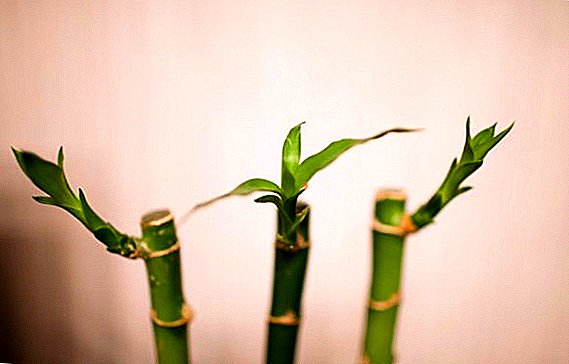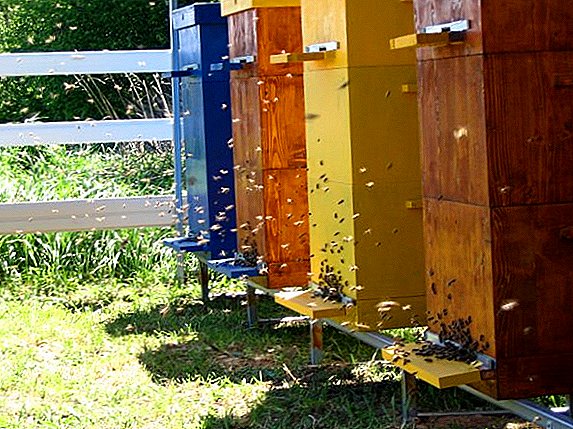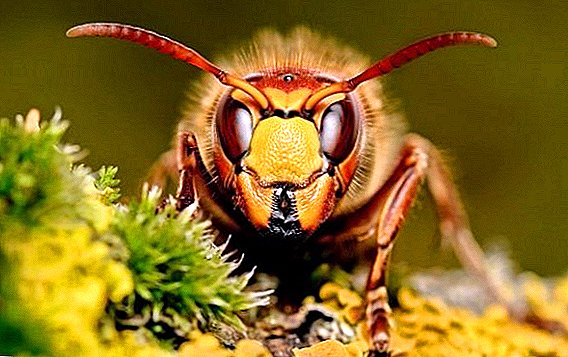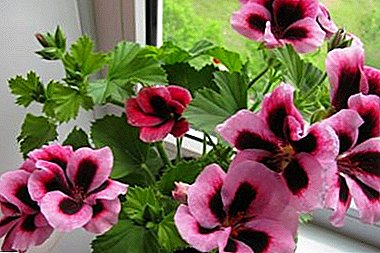
Cacti and succulents are among the most ancient inhabitants on the planet.which appeared about thirty million years ago. Today, these plants have become an integral part of our lives.
They create a cosiness in the house and serve as fine decoration of any modern interior.
Valued for an unusual look, not difficult care, long life expectancy. WITH
Among the various species, the graceful and rare representative of the genus Ariokarpus deserves special attention.
Origin and habitat
Ariocarpus belongs to the ancient genus of succulents, belonging to the cactus family. In culture, they are often called fossil cacti or "living stones."
In its natural environment, it settles on a rocky and sandy-clay surface, in a calcareous soil, among rocks. Distributed in the area of Texas (USA), in the territories of Mexico - from Coahuila to Nuevo Leon, found in the Rio Grande.
Attention! The genus was first described at the beginning of the 18th century by French botanist and researcher Michael Joseph Scheidweiler.
Views from the photo
In total there are 9 species of plants that are widely distributed in home culture.
Agave
Succulent flower with spherical, dark green, woody at the base of the stem.
The absence of edges is the main species characteristic feature.
The tubercles are hard, expressed, about 4 cm, diverge in the form of a rosette from the middle of the stem, covered from above with granular epidermis.
Areola large, pubescent, formed on the outer part of the tubercles near the tops. The spines are very short, hidden under the areole fluff. May be absent altogether. Flowers purple, bell-funnel-shaped. The berries are red. The species was described by the Mexican explorer Marcello Castañeda in 1941.
Cracked
Differs in an unusual shape, reminiscent of a frozen stone flower. In the culture of growing slowly, has no spines. It looks like limestone, completely covered with cracks, on which it grows and connects with it into one whole. The look is changeable. The stem is about 15 cm in diameter.
Repovial root, pronounced. Papilla 2-3 cm long, short, with upper wrinkled part. A pubescent groove is located in the middle of the upper side of the tubercle. Flowers are purple or pink. Flowers form near the top of the stem, wide open.
Intermediate
Representative with a gray-green single stem, flat-spherical, 5 cm high and 10 cm in diameter. A distinctive feature - the tip is almost on par with the soil.
Papilla rhomboid, solid, 3 cm in length, convex, with a groove in the central part. Flowers are light pink, with a diameter of 3 cm. Fruits are white and pink. Some botanists believe that this species is a natural hybrid between A. Lloyd and A. Kochubeianus.
Kotzebue
Synonyms: Kochubeynuas, Kochubey. A miniature plant with a rosette less than 5 cm in diameter. Papillae flat, resemble shingles on the location. The central grooves give them a special beauty and decorative. Flowers pink, bloom in July. A species of Elephantkfens (Elephant Tusk) is found. Large, with a rosette 10-12 cm.
Dull
Representative with a spherical single stem, gray-brown color.
The top is covered with white and brown down.
The tubercles are solid, pyramidal, triangular, with a wide base, a pointed upper part.
The areoles are formed at the ends of the tubercles.
Flowers pinkish, large.
Comb
Refers to the subspecies of the Blunted. Differs from it in blunt, comb-like (pectinate) spikes 2 cm in length. In an adult plant, the spines are covered with nap. Areola pubescent. Flowers pale pink.
Keelfish
The stem is gray-green, spherical, slightly flattened, 9 cm. It received its name due to the trihedral tubercles of keel-shaped shape. Unlike other cacti, it rarely has tubercles. Axilla covered with fluff. Flowers bell-shaped, purple with a pink tinge. Seeds are black.
Triangular
Endowed with a spherical stalk, gray-green (or brown) color with a fleecy top. Reaches up to 10 cm in diameter. Tubercles are triangular, pointed, long, curved, rigid. It has weak edges. Areola fuzzy. The flowers are bell-shaped, light yellow, rather large. The fruits are green.
Triangular elongated
Differs from the main view more elongated, long tubercles.
Lloyd's
It has a spherical flattened stem, 10 cm in diameter. The stem protrudes approximately 1–4 cm above the surface. The root is pronounced, camouflaged.
Nipples are gray-brown, crusty, rhomboid. The groove is pubescent, runs from the middle of the tubercle to the areola. No spines. Pink flowers.
Home care
Be sure to read the recommendations on the maintenance and care of the plant. Ariokarpus differs from its “desert brethren” and requires special attention.
Actions after purchase
Please note that the flower after purchase must be immediately transplanted. Unfortunately, many growers do not pay attention to this item. Plants are delivered to the store in containers for temporary overexposure. For permanent cultivation, they are not suitable. Take care in advance about choosing the right pot and preparing the soil mix.
When transplanting, sprinkle the root collar with fine gravel to protect the roots from rotting.
Soil selection
The earth should be sandy, nutritious, it is good to pass oxygen and moisture, to have a weak acid reaction. The soil can be prepared from 2 parts of coarse sand and 1 part of humus. You can add a little brick chips for good drainage.
Capacity Selection
 Ariocarpus has a fairly powerful root system, so a medium-sized pot with a wide bottom diameter and a bottom opening is suitable for it.
Ariocarpus has a fairly powerful root system, so a medium-sized pot with a wide bottom diameter and a bottom opening is suitable for it.
It is better to take an earthen pot.
When growing in a plastic or glass pot is recommended to put more sand.
At the bottom to make a drainage embankment.
Lighting
The flower prefers lit places. It tolerates exposure to direct sunlight. At the same time in the hot summer days it is recommended to create for him diffused lighting.
Temperature
In the spring and summer, he will be comfortable in a room with a temperature of about 22-27 degrees. In the autumn, the temperature is gradually lowered and during the rest period it should be at around 14-16 degrees.
Watering and humidity
Attention! The plant is watered only on summer days, about once every two weeks.
During the period of rest (in winter) and autumn, the soil is not moistened.
Additional moisture is not required. The flower is well adapted for growing in an apartment with dry air.
Bloom
Flowering time is at the end of August and the beginning of autumn. At this time it is recommended not to change the position of the pot, to moisten the soil according to the recommended mode.
Fertilizers
Mineral fertilizers are suitable as top dressing. Bring them at intervals - once in 2 months.
Attention! During the growing season the plant can not be fed.
Transfer
The flower has a slow growth, so it does not need frequent transplantation. Young plants are transplanted in the spring once a year, and adults as needed.
Be careful in handling the cactus. Damage to the root system can lead to death.
Breeding
 The plant is propagated by grafting cuttings or seeds.
The plant is propagated by grafting cuttings or seeds.
It is best to plant seedlings on permanent stock.
Cultivate in clear. When you grow up seedlings on your own roots, place them after picking in a humid, sealed environment and in ambient light conditions.
This should be done at the age of three months and up to one and a half years.
Then the young sprouts begin to gradually adapt to normal conditions of detention.
Pests and diseases
One of the few species that has excellent immunity from diseases.
In order to prevent rotting of the roots, it is recommended to observe the irrigation regime and sprinkle the root collar when transplanting gravel.
Ariocarpus is an interesting, unusual and rather rare plant in home culture. He is valued for his individuality and unique appearance, which distinguish him from other representatives of the genus succulents and cacti. This plant is able to attract the attention of guests and will be a great addition to the home interior of a city apartment.












